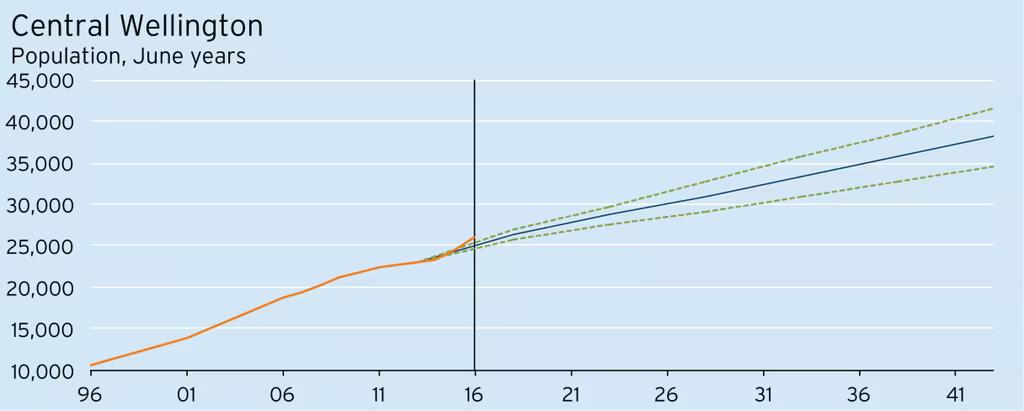Wellington: Central Wellington
This article is part of the Regional Hotspots report.
Highlights
- Population growth 2013-2023: 25% (5,760 people)
- Apartment conversions helped facilitate a revitalisation of Central Wellington during the 1990s and 2000s as many company head offices relocated.
- A surplus of lower-grade office space followed the Christchurch earthquakes and has become more pronounced as government departments consolidate premises.
- We are starting to see signs of surplus lower-grade office being converted into apartments. We expect this to continue, notably in Te Aro, Lambton and Thorndon.
- Increased tertiary student numbers in Wellington will also contribute to growth in the inner-city population and overall vibrancy of the CBD.
Central Wellington’s population grew substantially during the 1990s and the first half of last decade, increasing by an average of 5.5%pa between the 1991 and 2006 censuses. The growth was facilitated by Wellington City Council’s determination to revitalise the inner city, a process that was sorely needed as the size of the public sector workforce shrank and many corporate head offices relocated to Auckland or Sydney.
In part, the reduction in demand for office space in Wellington contributed to growth in the inner city’s population, with a number of older and lower-grade office buildings being converted to apartments. The increased number of people living in the central city also flowed through into demand for a more diverse range of retail facilities and a large number of entertainment options.
Since the Christchurch earthquakes in 2011, Wellington’s office market has been going through another transitional phase, with strong demand for space in high-grade and seismically safe buildings, while lower-grade buildings have struggled to attract or retain tenants. The surplus of lower-grade space has become even greater throughout 2016 as government departments have continued their process of consolidation, moving into refurbished and upgraded premises.
The returns that owners are able to generate from lower-grade office space are generally exceeded by the returns that can be made from apartments. As a result, for buildings that meet tenants’ seismic strength requirements, we expect to see more apartment conversions taking place over the next five years. This month’s large earthquake, which has severely affected Kaikoura and caused issues for several buildings in Wellington’s CBD, will have reiterated the importance of the ability of buildings to withstand quakes, particularly for potential tenants of those buildings.
Central Wellington’s population grew by 6.1% in the June 2016 year, suggesting the renewed wave of apartment conversions is already underway. This activity will be particularly concentrated in Te Aro, although the Lambton and Thorndon areas are likely to experience significant population growth as well.
Increasing tertiary student numbers in Wellington will also contribute to growth in the inner-city population. Victoria University has been steadily increasing its number of hostels over recent years, and the opening of the Whitireia-WelTec campus on Cuba Street in 2018 will add to student numbers in Central Wellington as well.
"Apartment conversions helped facilitate a revitalisation of Central Wellington during the 1990s and 2000s as many company head offices relocated."













